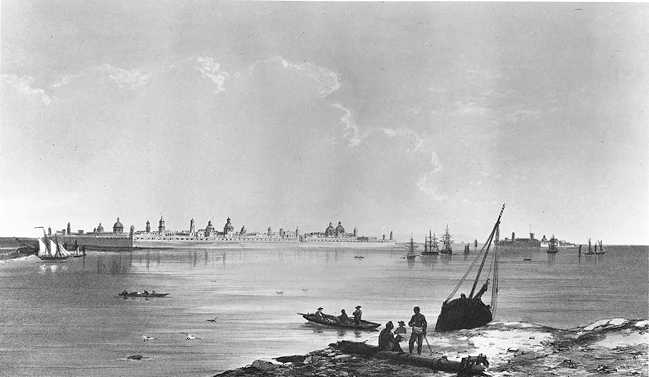
This toned lithograph after a sketch by Englishman John Phillips is one of several published by Europeans of Mexico's principal port of Vera Cruz, but is perhaps the only one that is roughly contemporary to the American invasion. Although the exact date of this work is not known, it is believed that Phillips made his original sketch sometime just prior to or during the American occupation. His description of the city:
"The town is enclosed by walls and defended buy strong barriers. The streets are wide, and the public edifices and the houses generally, spacious and strongly build; but without any pretensions to architectural display. It has, however, an appearance of melancholy; and this is heightened by the numerous black vultures called 'Sopilotes', observable in all directions; but which are protected by the law, owing to their usefulness as scavengers. The neighborhood, for several miles around, presents few traces of vegetation, the surface of the ground being for the most part covered with sand. The sickly season prevails from June to October, when the winds called 'Nortes' blow with great violence, and clear away the malaria.
Immediately opposite the town, and within half a mile from it, stands the celebrated castle San Juan de Ulloa (Uloa), on a coral reef. Merchant vessels of moderate tonnage anchor under the walls of the castle; but men-of-war and other vessels find better anchorage off the Island of Sacrificios, from which point the present view is taken."